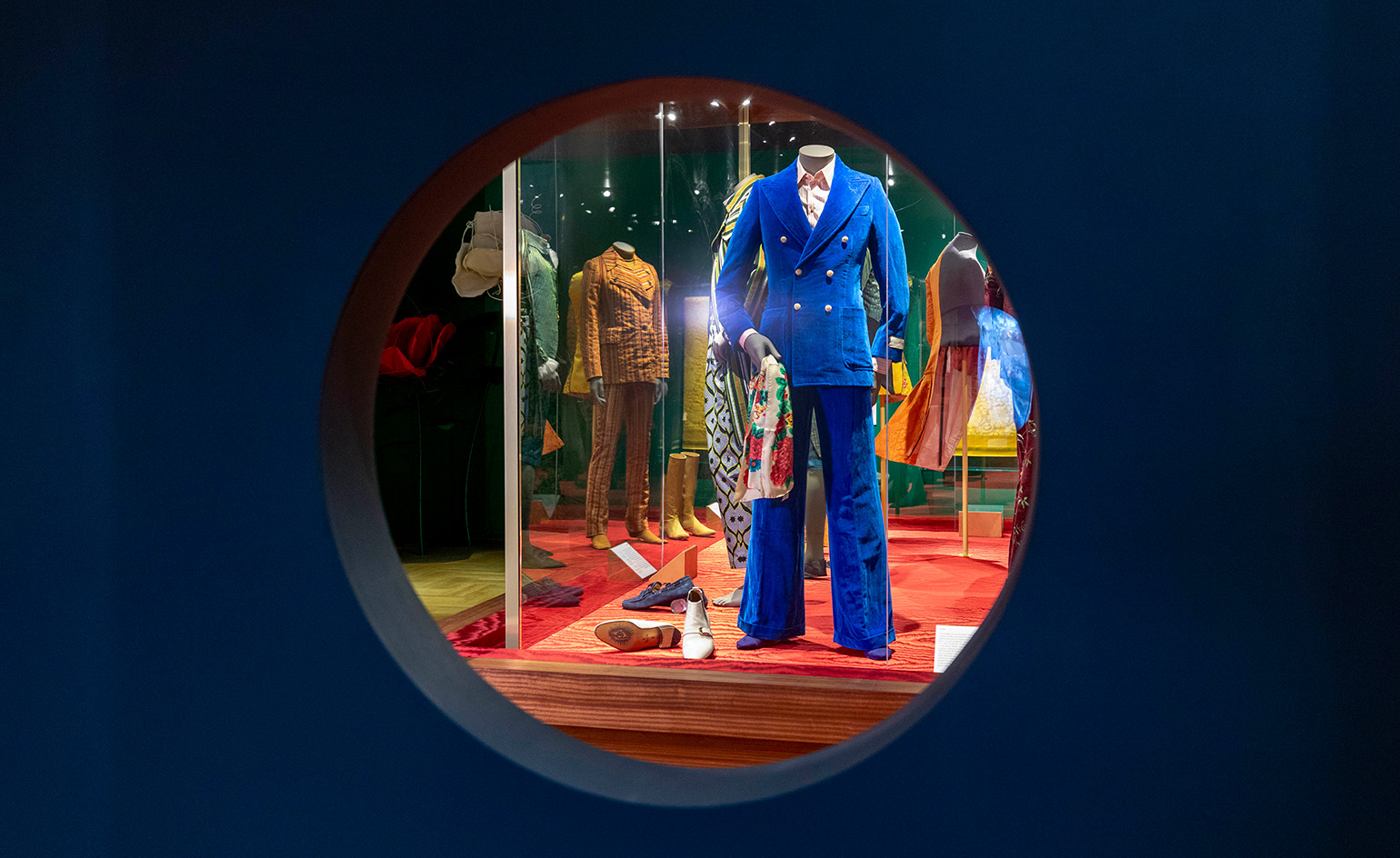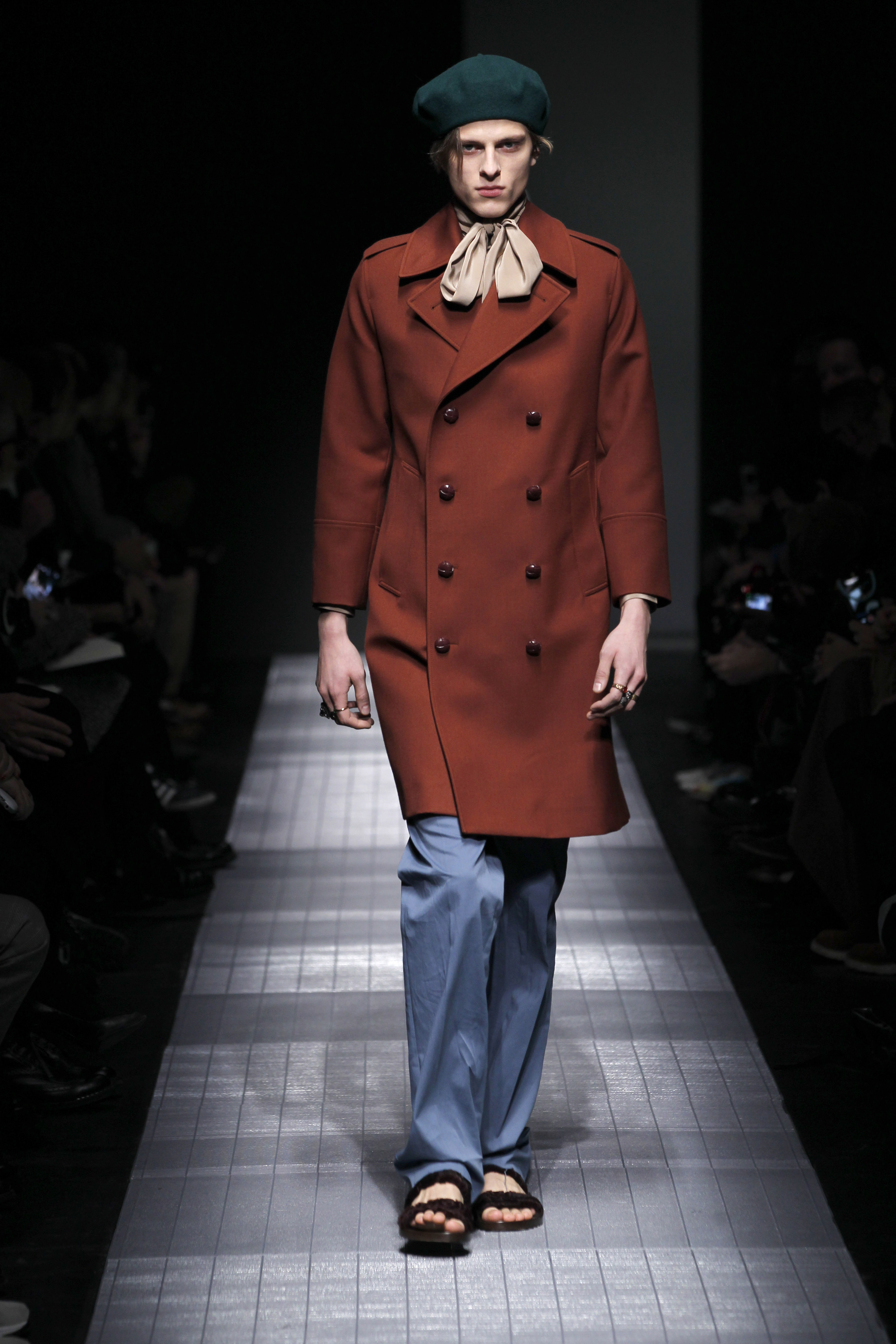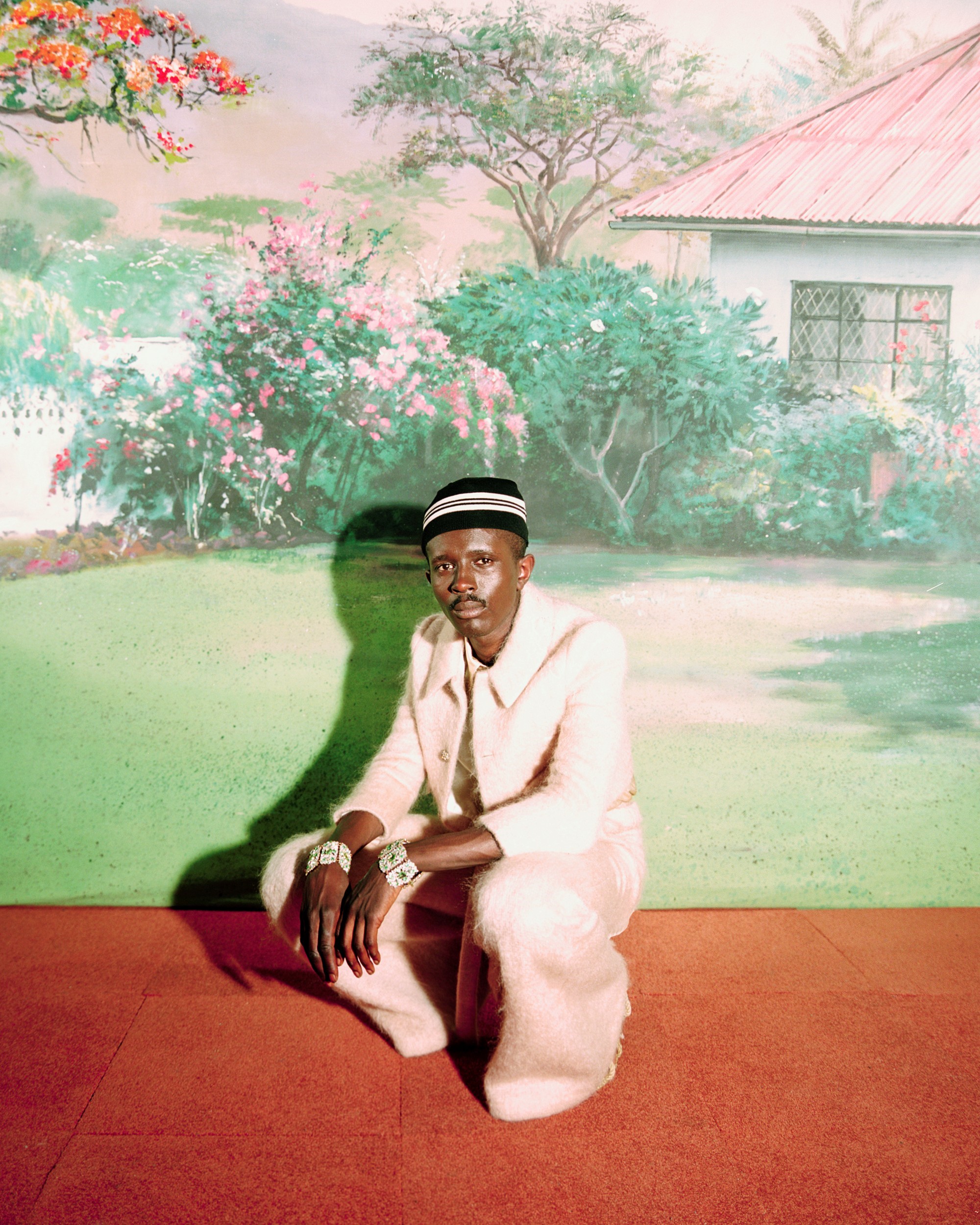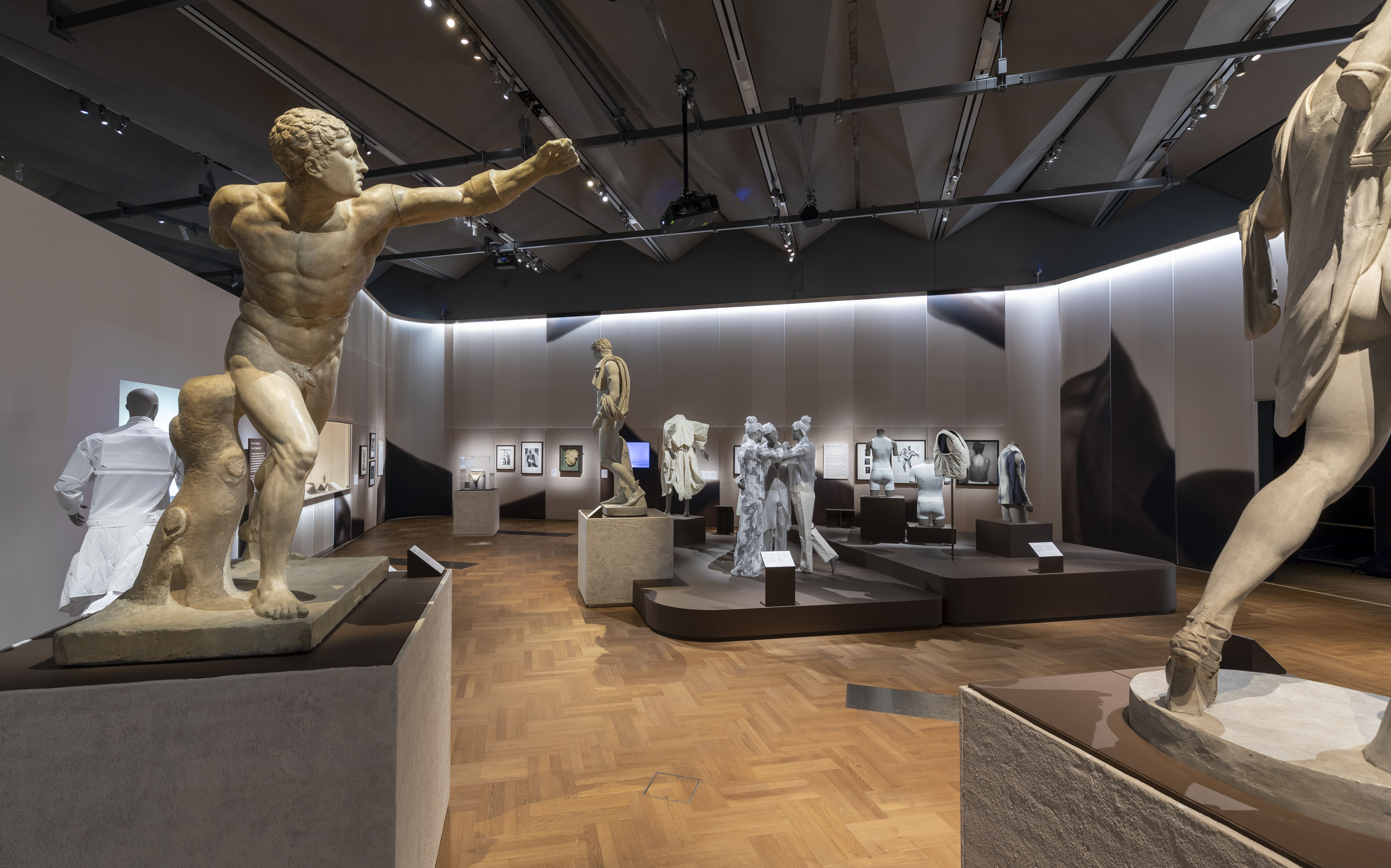‘Fashioning Masculinities’ at the V&A celebrates the art of menswear, past and present
In London, the V&A’s blockbuster fashion exhibition explores the ‘power, artistry and diversity’ of menswear at a moment when masculinity is under scrutiny

Part way through the V&A’s new menswear exhibition, ‘Fashioning Masculinities: The Art of Menswear’, is a 1759 portrait of Richard Milles, a British landowner, politician and botanist by Italian artist Pompeo Batoni. In it, he wears blushing shades of pink, including Batoni’s own fur-lined cerise cape, his hand pointing to a map of Rome. It is a quintessential ‘Grand Tour’ portrait, the artistic souvenirs of the 18th-century phenomenon whereby wealthy young men of means would make their way through Italy, educating themselves in the treasures of classic antiquity. Going home, they would fill their carriages with the spoils of their travels, plaster casts or copies of ancient busts and statues, and clothing, richly fashioned in the colourful, flamboyant European style.
It was this historical moment that provided the starting point for ‘Fashioning Masculinities’, an exhibition that explores the ‘power, artistry and diversity’ of menswear, tracing links between historical and contemporary masculine attire, and is the first of its type at the London institution. Across three galleries – ‘Undressed’, ‘Overdressed’ and ‘Redressed’ – co-curators Claire Wilcox and Rosalind McKever collate over 100 menswear looks, backdropped by a vast array of artworks across various mediums, both owned by the museum and lent from private collections (‘I think what’s unusual about this exhibition is the amount of art in it,’ Wilcox says). The space itself is created in collaboration with Jayden Ali of interdisciplinary practice JA Projects, who last month was announced as one of the designers behind the 2023 British Pavilion at the Venice Architecture Biennale.

Alessandro Michele for Gucci, F/W 2015.
‘We thought it would be interesting to begin with the Grand Tour, because that was the moment that classical ideals began to permeate into fashion,’ explains Wilcox at a preview of the exhibition. As such, ‘Fashioning Masculinities’ begins with ‘Undressed’, a gallery that explores how these ideals have been both perpetuated and pulled apart by designers in the centuries since. Watched over by the muscular, semi-clad bodies of the Apollo Belvedere and the Farnese Hermes, here in plaster-cast recreations, the curators looked towards the item of clothing most closely linked to the body – underwear. Pieces on display in this first gallery range from historical bloomers and nightshirts to lycra Spanx for men and gender-affirming chest binders by trans-owned company gc2b, alongside underwear-inspired pieces by Jean-Paul Gaultier, A-Cold-Wall* and Craig Green. A series of male nudes, by David Hockney, Zanele Muholi and Isaac Julien, among others, line the room’s walls.
‘There’s this sense of proportion to the first room,’ says Wilcox. ‘It’s about sculpture, and underwear, and how classical ideas in the 18th century idealised the male body. But we also wanted to think about diversity, to have these different shaped mannequins, reflecting the way the masculine body is under scrutiny today. Creating the exhibition, we realised that men’s bodies have been fashioned as much as fashion has been fashioned.’
There have been moments of bravery in men’s clothing, and moments of caution. We’re very fortunate this exhibition coincides with a moment of renaissance
Claire Wilcox, co-curator Fashioning
This linking of past and present, the combining of clothing and artefacts from various eras in thematic blocks, is one of ‘Fashioning Masculinities’ guiding principles (Wilcox notes that her favourite of the exhibition’s cabinets sees an 18th-century frock coat sit alongside a contemporary floral Gucci suit and Orlando-inspired couture gown by Kim Jones at Fendi, worn on the runway by male model Ludwig Wilsdorff). Over a further two rooms, titled ‘Overdressed’ and ‘Redressed’ – the former interrogating the ‘elite’ masculine wardrobe through an exploration of colour and print, the latter about the language of the suit – the same approach is illuminated by contemporary conversations about masculinity in fashion, whereby a new generation of designers are blurring what ‘menswear’ means today.
These designers’ work features throughout the exhibition. Like British-American designer Harris Reed, who graduated from Central Saint Martins in 2020, an early proponent of contemporary ‘gender-fluid’ fashion. His flamboyant creations, often featuring ruffles, pussy-bow collars and lace, have been memorably adopted by musician Harry Styles (including the crinoline and tulle gown he wore in the pages of American Vogue). A pink lamé shirt with lace bib and flared trousers by Reed feature in the ‘Overdressed’ gallery, as well as on the exhibition’s poster, and the designer will take part in the museum’s Fashion in Motion retrospective series to coincide with the show.

Wales Bonner S/S 2015 Afrique.
Reed has previously served as muse for Gucci creative director Alessandro Michele, walking in the house’s Cruise 2019 collection and later appearing in an advertisement for Gucci’s ‘ageless, genderless’ fragrance Mémoire D'une Odeur. Works from Michele’s Gucci also feature in the exhibition – of which the Italian house is the main sponsor – including the aforementioned floral suit, part of the ‘Overdressed’ gallery, and a ruffled blue lace and tulle dress also worn by Styles in American Vogue (this time on the cover). Historical references feature in both Reed and Michele’s work, and ‘Fashioning Masculinities’ puts their clothing in conversation with the past. As a number of reviews of the exhibition have noted, the flamboyant ceremonial pink robes and plumed headdress worn by Charles Coote in a 1773 portrait, displayed in the middle of the exhibition, would not look out of place in either designer’s collection.
Receive our daily digest of inspiration, escapism and design stories from around the world direct to your inbox.
Michele described his first collection for Gucci, back in 2015, as having ‘a dreamy ambiguity … a point of departure that blurs the masculine-feminine divide’, a precedent that has shaped his collections since. The raft of other contemporary designers that feature in the exhibition alongside Michele – Grace Wales Bonner, Martine Rose, Priya Ahluwalia, Nicholas Daley, Craig Green and Jonathan Anderson among them – also explore this point of ambiguity in menswear, each through their own distinct cultural lens. In the exhibition, their work is grouped thematically alongside the V&A’s archival pieces in moments that invite both comparison and juxtaposition. For example, a 2014 powder-pink Wales Bonner two-set from her ‘Afrique’ graduate collection appears next to a raspberry-coloured wool coat, waistcoat and britches from the 1760s, both regal in their ambitions – a delicate thread that unites two makers, centuries apart.
‘I think the exhibition is about looking at past and present, comparing them, and trying to understand that many of the revolutions in men’s fashion today have historical precedents,’ says Wilcox. She admits that the timing of ‘Fashioning Masculinities’ is fitting. ‘There have been moments of bravery in men’s clothing, and moments of caution. We’re very fortunate this exhibition coincides with a moment of renaissance. Menswear is now more exciting than ever.’



‘Fashioning Masculinities: The Art of Menswear’ runs at the V&A, London, until 6 November 2022. In partnership with Gucci.
vam.ac.uk/masculinities
Jack Moss is the Fashion & Beauty Features Director at Wallpaper*, having joined the team in 2022 as Fashion Features Editor. Previously the digital features editor at AnOther and digital editor at 10 Magazine, he has also contributed to numerous international publications and featured in ‘Dazed: 32 Years Confused: The Covers’, published by Rizzoli. He is particularly interested in the moments when fashion intersects with other creative disciplines – notably art and design – as well as championing a new generation of international talent and reporting from international fashion weeks. Across his career, he has interviewed the fashion industry’s leading figures, including Rick Owens, Pieter Mulier, Jonathan Anderson, Grace Wales Bonner, Christian Lacroix, Kate Moss and Manolo Blahnik.
-
 Out of office: The Wallpaper* editors’ picks of the week
Out of office: The Wallpaper* editors’ picks of the weekFar from slowing down for the festive season, the Wallpaper* team is in full swing, hopping from events to openings this week. But when your job is chasing the pulse of culture, work can feel like play – and we also had time for some festive cocktails and cinematic releases
-
 The Barbican is undergoing a huge revamp. Here’s what we know
The Barbican is undergoing a huge revamp. Here’s what we knowThe Barbican Centre is set to close in June 2028 for a year as part of a huge restoration plan to future-proof the brutalist Grade II-listed site
-
 A former agricultural building is transformed into a minimal rural home by Bindloss Dawes
A former agricultural building is transformed into a minimal rural home by Bindloss DawesZero-carbon design meets adaptive re-use in the Tractor Shed, a stripped-back house in a country village by Somerset architects Bindloss Dawes